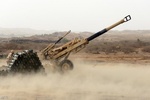For years, bears have been the most kind-hearted animals in our childhood cartoons, but we have never been aware that the valuable animal is having a hard time in the real world and that their habitat is being destroyed by human encroachment.
There are eight bear species in the world, including polar bears, brown bears, black bear, sloth bear, red pandas, Asiatic bear, spectacled bear and the giant panda, each of which is in a specific biological environment, such as polar bears are on the verge of extinction due to global warming, and some others like the giant panda, are under serious threat.
Habitat destruction, food shortages, and conflicts with humans are among the main reasons threatening their lives, although sometimes the male ones kill the cubs in order for the mother to be ready to regenerate.
However, bears are what conservationists refer to as an “umbrella species”, by which they mean a particular species whose protections help safeguard other species in their habitat.
By dragging salmon carcasses through the forest, they help to enrich the soil. Additionally, they deposit scat on the forest floors. Animal waste deposits are great for enriching the soil. They act as a natural growth booster.
Bears are also amongst the main seed dispersion agents, when they eat fruits, deposit the seeds on different parts of the ecosystem which results in new plant growth. Black bears, in particular, eat a lot of fruit and vegetation.
Even though bears are not scavengers, they help by eating carcasses. Additionally, bears are predators by nature so they help to maintain the balance of the ecosystem by reducing the population of animals like deer, moose, and bucks.
Towards extinction
But in Iran, there are only two species of brown and black bears, each of which is on the verge of extinction and critically endangered, respectively, according to estimates, about 1,000 to 1,300 brown bears and less than 100 black bears are living in the country’s natural habitats.
There are different subspecies of brown bear in the world and it is distributed in almost all of the northern hemisphere. For example, the grizzly bear in the United States weighs 650 kg or the Kodiak bear about one ton, which is the same as the Iranian brown bear, with the difference that the Iranian brown bear is the smallest subspecies weighing about 250 kg. In fact, brown bears are known by a specific local name in different countries.
This bear is in a good condition in terms of population in the world, or in the lowest level of concern, but in Iran and West Asia, the species is in danger of extinction because its population is more affected by various threatening factors.
Brown bear population is widespread in the Alborz and the Zagros Mountains. In fact, the species exists in 22 provinces of the country.
The Asiatic black bear, also known as the Baluchi black bear, lives mainly in forested areas, especially in hilly and mountainous areas at altitudes of 500 meters to 2,700 meters, and is found in the provinces of Kerman, Hormozgan, and Sistan-Baluchestan with very low density.
Many times, deforestation and villa construction cause human intrusion into the habitats of these animals, and bears are forced to enter human settlements to find food, eating small livestock, feeding on garbage, or destroying agricultural lands, which causes the killing of animals.
However, bears are suffering from various threats, and humans should be kinder to them so that the future of generations can benefit from the valuable species.
National protection programs
Shahaboddin Montazemi, director of the wildlife conservation office at the DOE, told the Tehran Times in June that several national protection programs have been developed, 10 of which are underway, such as the conservation plans for the Persian leopard and the brown bear.
Referring to the brown bear protection plan, he said that “the initial framework of a protection program is based on promoting public awareness, along with reducing conflicts among wildlife species and locals.
We should develop an environment regarding various factors, in which the bears can not only survive but have a desirable life in nature.
Unfortunately, over the past year, we have seen an alarming increase in the slaughter of bears during conflicts with humans, which could be rooted in the encroachment on the habitat of these animals.
And after researches, we realized that land-use changes were the reason behind the conflicts, as in the main bear habitats, some people or farmers, who owned lands, have built small buildings to live and earn income for themselves, therefore, posed a threat to the species habitat.”
He went on to say that “this highly requires training, management, and supervision, local communities are supposed to help us to protect the wildlife because humans are more responsible for conflicts with animals.
Livestock and herding dogs are other causes of animal deaths, which need proper management to be addressed.”
First published in Tehran Times






















Your Comment